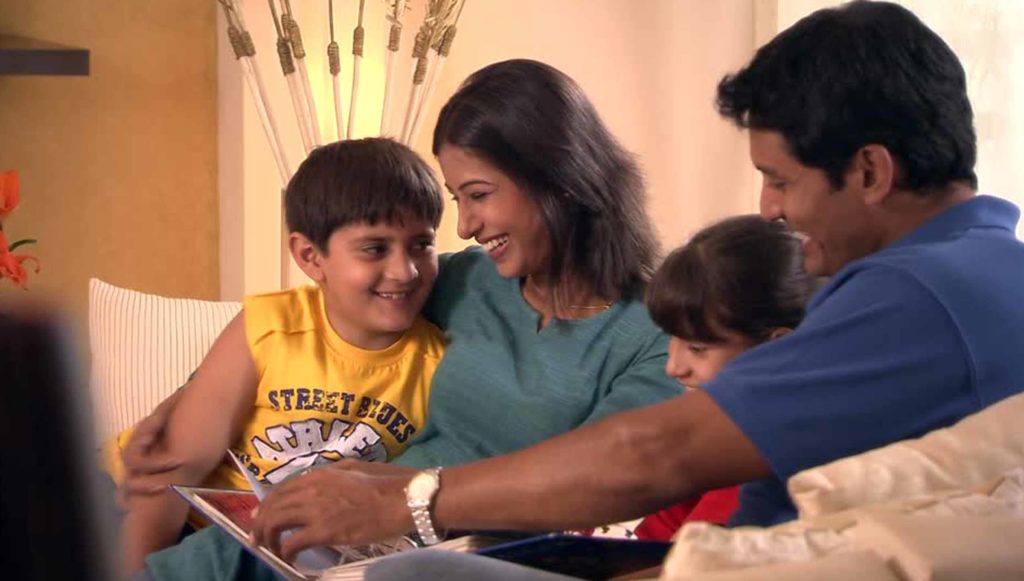If you want your children to be intelligent, read them fairytales. If you want them to be more intelligent, read them more fairytales. – Albert Einstein
In 2014, the American Academy of Pediatrics advised its 62,000 member doctors to recommend daily reading aloud to the parents and children they see in their medical practices. Their statement said “Reading regularly with young children, stimulates optimal pattern of brain development, and strengthens parent-child relationship at a critical time in child development, which, in turn, builds language, literacy, and social-emotional skills that last a lifetime”.
“Reading aloud is good for people of every age, but its effects are perhaps more important in infancy and early childhood. A child’s brain growth rate is high during the first three years of life. Reading to children during this period gives them more of exactly what they need: more loving attention, more language and more empathy. Infants also learn from seeing expressive human faces. Babies tend to make eye contact when they are about two months old. By six months, they make eye contact and follow the other person’s gaze. This is one of a baby’s earliest social behaviors, and by twelve months almost all babies will do it. The language of stories helps baby develop the linguistic scaffolding of early speech, and helps young children work towards fluency. When children are older, books read aloud give them access to complex language and narratives that might otherwise be beyond them. Reading out loud brings joy, engagement and emotional connection for children, teens, adults –everybody” (Gurdon).
In these days of technologies, children from middle and upper middle class families have cell phones, tablets, and televisions in their bed rooms. Most of them are glued to these devices. In the behavior literature, it is clear that children who have too much screen time can have deficits in different areas, like language, imagination, and attention. A 2012 study found that children who enter kindergarten having had little or no reading time tend to lag other children by twelve to fourteen months in their language and reading skills.
Screen time recommendations by American Academy of Pediatrics (2016)
1. For children under 18 months parents should avoid screen time except for video-chatting. For children between 18-24 months, parents may introduce high quality digital programming but watch with their children to help them understand what they are watching.
2. For children ages 2-5 years, limit screen use to I hour per day of high quality programs. Parents should co-view the media with children to help them understand what they are watching.
3. For children ages 6 and over, place consistent time limit on daily media use.
4. Designate media free time together such as dinner time or driving time.
Conclusion
. Start early, read often. Reading to babies helps build bonds, vocabulary and habits.
. Read the pictures. Illustrations are visual clues that can help children build their vocabulary and their emotional tool kits.
. Press pause button. Don’t rush through the book. Take time to look at a picture, ask question, or share reactions. Help children make connection between what they read and the world around them.
. Make reading part of your daily routine.
‘Reading aloud is a small thing, yet profound. To read to someone you love is the simplest of gifts, and one of the greatest. All that is required for a long, happy string of enchanted hours is for someone to take the trouble to make it happen. Surely that is something we can aspire to do, with love.’(Meghan Cox Gurdon)
“Please read to your kids. It’s not the school‘s job to get our kids’ reading, it’s our job- and it’s a wonderful, magical act of love and caring”. (James Patterson, International bestselling author).
• 10 Best Children’s Books of All Time (Time Magazine).
• 1-Goodnight Moon by Margaret Brown (1947), Age range 0-3.
• 2-The Very Hungry Caterpillar by Eric Carle (1969), Age-0-4.
• 3-Where the Wild Things Are by Maurice Sendek (1963), Age-2-6.
• 4-The Cat in the Hat by Dr. Seuss (1957).Age 3-8.
• 5-Charlotte’s Web by E. B. White (1952). Age-8-11.
• 6-Harold and the Purple Crayon by Crockett Johns (1955). Age 3-7.
• 7-Charlie and the Chocolate Factory by Roald Dahl (1964). Age 8-10.
• 8-Little Women by Louis May Alcott91880).Age 9-12.
• 9-Harry Potter and the Philosopher’s Stone by J.K. Rowling (1997). Age 8-14.
• 10-The Chronicles of Narina: The Lion, the Witch and the Wardrobe by C. S. Lewis (1954). Age 8-12.
Source
• Meghan Cox Gurdon. The Enchanted Hour, The Miraculous Power of Reading Aloud In the Age of Distraction. New York: Harper Collins, 2019.
Dr Saheb Sahu, MD, FAAP.
Education, Home
The Power of Reading Aloud to Children

